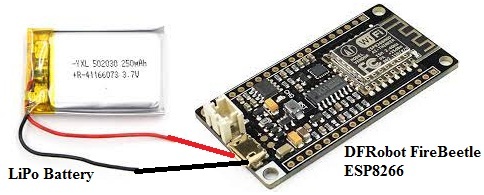In wireless communication, signal jammers serve a crucial function by disrupting the signal connection between a wireless device and its access point. These portable, handheld devices emit noise to interfere with the frequency bands used by various wireless devices, effectively blocking internet access within a 15-meter radius. Signal jammers are not only affordable but also highly effective in disrupting communication on specific frequencies, making them a popular choice for enhancing security and protecting personal privacy.
The market offers a range of jammers designed for different purposes, including mobile jammers and Wi-Fi jammers. In this article, we focus on the Wi-Fi jammer, exploring its working mechanism and various applications.
When activated, a Wi-Fi jammer sends out a signal that disrupts the normal communication between Wi-Fi enabled devices and their access points. This effectively creates a “dead zone” where no wireless device can connect to the internet. The jammer operates by transmitting radio signals that interfere with the Wi-Fi signals, rendering them unusable within the affected area.
Wi-Fi jammers are particularly useful in enhancing security. For instance, businesses can use them to prevent unauthorized access to their wireless networks, thereby protecting sensitive data from being intercepted. Additionally, individuals can use Wi-Fi jammers to protect their personal privacy, preventing unauthorized devices from connecting to their home networks and potentially accessing private information.
- How Does a Wi-Fi Jammer Work?
- Specs: What to Consider?
- How Does a Wifi Jammer Function?
- How Can You Detect a Wifi Jammer?
- Can You Create a WiFi Signal Jammer?
- Wifi Jammer vs Wifi Deauther: Which Is Better?
- Advantages and Disadvantages: What You Need to Know
- Wi-Fi Jammer: What Are Its Applications?
How Does a Wi-Fi Jammer Work?
A wifi jammer is a wireless device designed to disrupt the normal operation of a wireless network. By transmitting a powerful signal on the same frequency as the WiFi network, it effectively blocks legitimate devices from connecting, or causes existing connections to become unstable or sluggish. The range of the WiFi jammer’s effectiveness is influenced by various factors, primarily the type of jammer, its frequency, and the strength of the transmitted signal. Typically, a jammer can cover an area with a diameter of approximately 30 meters from its source. This innovative device offers a simple yet effective solution for those seeking to secure their wireless networks or control network access in specific environments. Whether for security purposes or to manage network traffic, the WiFi jammer provides a reliable method to disrupt wireless connections within a defined radius.
Specs: What to Consider?
The specifications of WiFi jammer are given below, varying by manufacturer. Discover key features and technical details for optimal performance. Choose the best jammer based on its specs.
- Internal Modulation: FM Hopping frequency
- Power Supply: 12VDC
- Signal Source: DDS & PLL synthesized
- Battery Type: Li-Polymer Battery
- Antenna Type: Omnidirectional
- Modules: 1 or 2 modules per unit
- Remote Control: SNMP-controlled parameters
- Air Interface Standards: Bluetooth and WiFi
- Dimensions: 260mm x 10mm x 39mm
- Design: Waterproof
- Weight: Approximately 0.8Kg
- Output Power: EIRP 8W
- Operating Temperature: -20ºC – +65ºC
- Interface Standard: 802.11 a/b/g
- Humidity Range: 5% – 80%
How Does a Wifi Jammer Function?
Wi-Fi jammers operate by generating a specific frequency that disrupts Wi-Fi connections and disables devices linked to various networks, including 3G, 4G, cordless Wi-Fi, and GPRS. Designed primarily to assist in resolving issues arising from cell phones and wifi networks, these signal jammers function within a defined frequency range. Specifically, wifi jammers effectively block WiFi signals within the 2.4 GHz to 2.5 GHz frequency band. Such jammers are highly favored by network companies handling sensitive data, as they help prevent potential leaks.
How Can You Detect a Wifi Jammer?
WiFi jammers can be detected through various methods, including scanning WiFi apps, physical inspection, spectrum analyzer, and reviewing WAP logs. Upon detection, there are several strategies to mitigate their impact. Consider adjusting the frequency or channel of your wireless network by using a directional antenna or signal blocking device. Implementing Wireless Intrusion Prevention Systems (WIPS) is another effective solution. If the jammers significantly disrupt your wireless network, reaching out to law enforcement is also advisable. By taking proactive measures, you can ensure network stability and security even in the presence of WiFi jammers.
Can You Create a WiFi Signal Jammer?

Here’s how to create a Wi-Fi jammer using an ESP8266. This DIY jammer is compact, portable, and can be powered by a power bank, making it easy to carry and use anywhere. Its primary function is to scan for various WiFi devices, block selected connections, generate multiple networks, and confuse WiFi scanners. In essence, this jammer serves as a tool to expose WiFi vulnerabilities, demonstrating how susceptible your WiFi routers or hotspots can be. Through deauth attacks, it effectively jams signals, giving you the ability to act as a WiFi hacker, even without knowing anyone’s WiFi password. With just a tiny ESP8266 board, you can showcase the potential security risks of unsecured WiFi networks, highlighting the importance of network security in today’s connected world.
1.Components
The required components for this jammer include ESP8266-1 from DFRobot FireBeetle, LiPo Battery-1 or power bank, PCB, and Arduino code. Enhance your DIY projects with this easy-to-assemble jammer, utilizing a high-performance ESP8266-1 module, a long-lasting LiPo battery, and a customizable Arduino code on a durable PCB.
2.Need to Download Arduino IDE
Creating a WiFi Jammer is easier than you think. Start by downloading and installing the Arduino IDE for free from the Arduino.cc website. Once installed, open the IDE and navigate to File -> Preferences. Here, you’ll need to add the esp8266 board package to the Additional Boards Manager URLs. Then, head to Tools -> Board -> Boards Manager, search for esp8266, and install the board. After installation, restart the IDE to finalize the setup. With these steps, you’re on your way to creating a powerful WiFi Jammer.
3. Module Coding
Need to download the repository (Release Version 1.5) from GitHub. After extracting the downloaded folder, navigate to the appropriate path to open the file in the Arduino IDE. To ensure compatibility, select the board you’re using from Tools -> Board, and then choose the correct communication port from Tools -> Port. Once these settings are configured, simply click the upload button. Wait for the notification indicating successful uploading; your device will then be ready for use. Follow these steps for a seamless Arduino programming experience, ensuring your project is up and running smoothly.
4.Connect the Module
Learn how to create a WiFi Jammer with ease. Start by connecting the module via a micro USB connector or battery for power. Next, connect the module to a WiFi named ‘pwned’ using your phone or laptop, and enter the secret word ‘deauther’ for access. Once connected, open your browser and visit the IP address 192.168.4.1 to access the main control panel. From here, you can manage all settings and select the WiFi connection you wish to target. Navigate to the attack tab, choose your preferred attack type, and let the device do its job. With these simple steps, you can easily operate your WiFi Jammer and achieve the desired results.
Wifi Jammer vs Wifi Deauther: Which Is Better?
The difference between Wi-Fi Jammer and Wi-Fi Deauther explored. Learn how they work, their effectiveness, and which one suits your needs better. Compare features and uses.
| Wifi Jammer | Wifi Deauther |
| A wifi jammer transmits a predefined signal within precise bandwidths to interrupt any Wi-Fi communications. | A Deauther is used to disconnect all the connected devices to a network forcibly. |
| It transmits noise signals to the 2.4GHz Wi-Fi spectrum, disturbing the original frequency spectrum of Wi-Fi. | A Deauther transmits packets to interface with your Wi-Fi signals, interrupting the normal Wi-Fi router working. |
| This jamming affects each wireless communication device within a precise frequency range. | Deauthing is a denial of service attack, so it affects only targeted WiFi devices. |
| Wifi Jamming is indiscriminate. | Deauther is targeted. |
| It is usually detectable. | It is usually undetectable. |
Advantages and Disadvantages: What You Need to Know
The advantages of Wi-Fi jammer include: blocking unauthorized access, enhancing privacy security, and preventing data leaks.
- Wi-Fi Jammer Protects Sensitive Data: The Wi-Fi jammer offers crucial security for sensitive data transmitted or received via wireless systems.
- Blocking Wi-Fi Signals: This device effectively blocks Wi-Fi signals, preventing them from reaching unauthorized sources.
- Personal Information Security: The Wi-Fi jammer aids in safeguarding your personal details from any third-party interference.
- Risk Reduction of Data Loss: It significantly reduces the risks associated with data loss in modern technologies.
- Defense Against Attacks/Hacks: By using a Wi-Fi jammer, you minimize the chances of intruders attacking or hacking your systems.
- Fraud and Identity Theft Protection: These devices help mitigate the risk of fraud and identity theft, especially in public places.
- Collision Resistance: Wi-Fi jammers are designed to resist collisions, eliminating the need for collision avoidance measures during signal transmission.
- Long-Distance Signal Transmission: WiFi jammer signals have the capability to travel long distances.
- Efficient Signal Transmission: It allows for the transmission of short-length jam signals, thus saving time compared to normal operations.
The disadvantages of Wi-Fi jammers include: signal blockage, potential illegal use, and interference with legitimate communication.
- Jam Signal Length Consideration: Careful consideration must be given to the length of jam signals, especially for both single and parallel transmissions.
- Varying Energy Levels for Different Scenarios: Jam signals require different levels of energy depending on their usage scenarios.
- Legal Authorization Required: Using these devices without proper authorization from relevant authorities may result in fines.
- Public Security Risks: These devices can pose significant risks to public security communications.
- Emergency Communication Disruption: They have the potential to prevent people from making emergency calls.
- Impact on Law Enforcement: The use of these devices can alter the communications of law enforcement agencies.
Wi-Fi Jammer: What Are Its Applications?
The applications of Wi-Fi jammer include: blocking unwanted Wi-Fi signals, enhancing network security, and preventing data leaks.
- WiFi Jammers in Public Places: WiFi jammers are commonly used in settings like movie theaters and libraries. Their purpose is to preserve a serene environment, prevent cheating, and bolster security.
- Blocking WiFi Connections: These devices work by disrupting WiFi connections. They emit a frequency that interferes with WiFi networks, effectively disabling devices from connecting.
- How Wireless Jammers Work: Wireless jammers operate by deliberately interrupting authorized WiFi signals. This is achieved by emitting powerful radio energy at the same frequencies as the WiFi signals.
It is used to prevent unauthorized communication between inmates and visitors, serving as a highly effective and practical device to block internet traffic. A WiFi jammer works by disrupting the wireless signals within a WiFi network, thereby preventing users from connecting. This overview explores the making and applications of WiFi jammers. However, it’s important to note that jamming equipment is prohibited by federal law when it interferes with personal communication services, cellular networks, GPS, police radar, and more. Detecting mobile network jammers within the system can often be challenging, as operators may simply experience poor reception, making it crucial to carefully inspect the network for any signs of interference. These devices transmit varying signal strengths to confuse receptors and induce unexpected responses. Now, you may be wondering, what is the available range for jamming?
